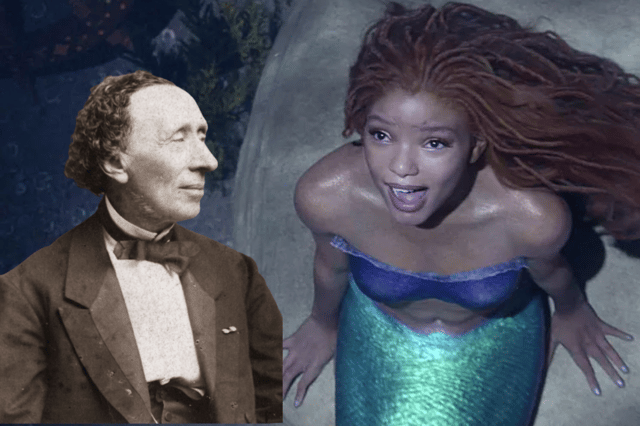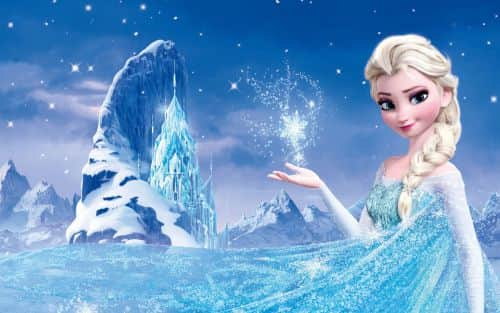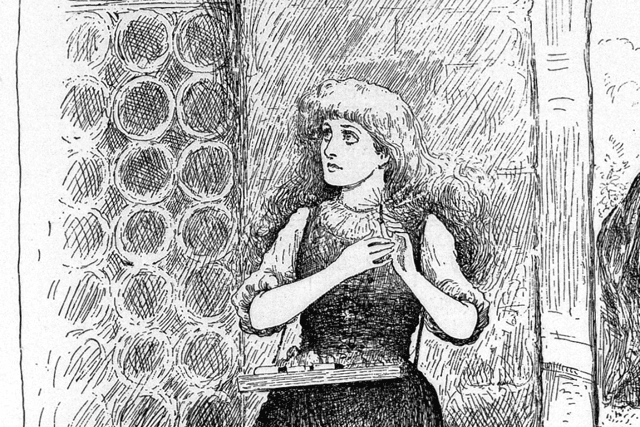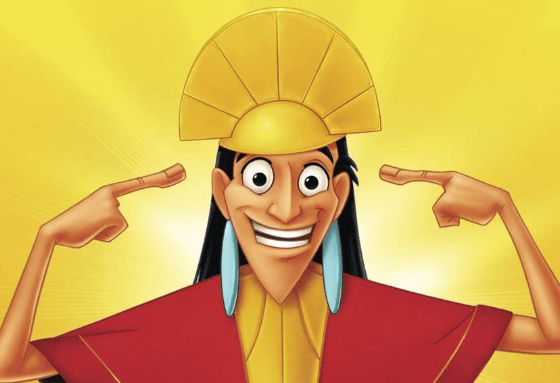Happy Birthday Hans Christian Andersen; the author behind all your favourite Disney films
People in this article


Today would have been the 218th birthday of Danish writer Hans Christian Andersen, the author of a number of celebrated fairy tales that have rivalled those of The Brothers Grimm throughout history. Such is the legacy of Andersen as a literature great that it’s not just his home country of Odense that have sculptures dedicated to him as those who frequent Central Park (Andersen and The Ugly Duckling), Solvang, California (founded by Danish settlers) and even Sydney where a portrait bust was unveiled by the Crown Prince and Princess of Denmark in 2005.
With a body of work that has captivated the hearts and minds of the young, and the young at heart, throughout centuries of reading, almost everyone can remember the first time they were regaled with the tale of a princess who couldn’t sleep because of a pesky pea? Or the allegorical tale of growing into a beautiful swan… sorry, person despite being shunned as an “ugly” younger version of yourself?
Advertisement
Hide AdAdvertisement
Hide AdDisney haven’t forgotten, as some of their most prominent feature films have either been adapted from the works of Christian Andersen or have drawn immediate influences from. Take for example the film that put Disney back on the map after years of wandering in the cinematic wilderness - 1989’s The Little Mermaid, which ushered in a second golden age of animation not just for the House of Mouse, but the industry as a whole.
True to recent Disney form, much like Aladdin and The Lion King before it, The Little Mermaid is also getting the live-action treatment, with the trailer for the film featuring Halle Bailey and Melissa McCarthy. That received some polarising views, no less towards the notion that Bailee wasn’t the appropriate skin tone for Ariel. Despite the fact that mermaids would generally look greenish due to staying submerged for lengths of time - and that they’re fictional to boot.
With the theatrical release of The Little Mermaid to take place next month in the United States, followed shortly by a worldwide release, PeopleWorld takes a look at some of the other writings from the birthday boy Hans Christian Andersen that have also been adapted to the big screen.
The Snow Queen


First published in 1844, The Snow Queen follows a young girl named Gerda who sets out to rescue her friend Kay, who has been kidnapped by the Snow Queen and taken to her palace in the frozen north. Gerda travels through various magical lands and meets several interesting characters along the way, including talking animals and a robber girl. She eventually reaches the Snow Queen's palace and finds Kay imprisoned there. He has become cold and distant under the Snow Queen's influence and does not recognize Gerda.
Advertisement
Hide AdAdvertisement
Hide AdGerda is able to break the Snow Queen's spell on Kay by singing a song he used to love as a child, which restores his memory and love for Gerda. They escape from the palace and travel back to their hometown, where they are reunited with their family and friends.
If it sounds awfully familiar, to the point of grating especially over the seasonal holidays, you’re right - it became the concept for Disney’s juggernaut winter film Frozen.
Thumbelina
Thumbelina is no bigger than a person's thumb. She is born from a barley corn and soon finds herself on a series of adventures. She is kidnapped by a toad and forced to marry her son, but escapes with the help of a friendly swallow. She then encounters a series of suitors, including a field mouse and a mole, who try to persuade her to marry them. However, she rejects them all and continues her search for a true friend.
Eventually, Thumbelina is found by the same swallow that helped her escape from the toad, and the two of them fly to a magical land of flowers. There, she meets a tiny flower-fairy prince who falls in love with her and asks her to marry him. Thumbelina accepts, and they have a beautiful wedding.
Advertisement
Hide AdAdvertisement
Hide AdThe story of Thumbelina is known for its themes of perseverance, kindness, and the importance of inner beauty over outward appearance. Though these tropes are a constant throughout a number of fairy tales, the actual story itself found a lot of footing in its 1994 animated adaptation, which was not undertaken by Disney but instead Warner Brothers and cast John Hurt and Jodi Benson in voice roles Jodie Benson, I hear you ask? The voice of Ariel in the 1989 adaptation of The Little Mermaid.
The Little Match Girl
This Hans Chritian Andersen story follows a young girl who is trying to sell matches on a cold and snowy New Year's Eve. She is barefoot and poorly dressed, and is too afraid to return home because her father will beat her for not selling any matches.


As she wanders through the streets, the little match girl strikes matches to keep warm and to brighten her spirits. With each match, she has a vision of a warm and happy place, such as a Christmas feast or a cosy home. But each time the match goes out, she is forced to return to reality, where she is still cold, hungry, and alone.
In the end, the little match girl dies from exposure and is found the next morning by soemone passing by. However, she is seen to be smiling, and it is implied that she has passed away while having one of her happy visions.
Advertisement
Hide AdAdvertisement
Hide AdWhich would explain why the tale hasn’t really been picked up for an animated piece by Disney, though they did release it as a short film - originally for Fantasia 2006 before the idea was dropped and the shorts released separately
The Emperor's New Clothes
The Emperor's New Clothes is known for its themes of deception, vanity, and the importance of honesty, as the 1837 short tale follows an emperor who loves clothes more than anything else in the world. Two con men come to the city and pretend to be weavers who can make the finest and most beautiful clothes imaginable.


They claim that these clothes are so special that only the wise and worthy can see them, and that foolish or unworthy people cannot. The only fool in the short tales is the emperor himself, who proceeds to parade through the city naked, laughing at the crowds believing they’re not worthy to see his fancy new garb. Ultimately, the joke is on the emperor and his hubris.Which in a roundabout way became somewhat of the storyline for Disney’s 2000 film, The Emperor’s New Groove. Admittedly it doesn’t follow the story word for word, or at all - but given that the arrogant Emperor Kuzco (voiced by David Spade - magnificently by the way) is duped by the two villains of the piece through by virtue of his sheer arrogance, and the humbling he receives afterwards, we’re certain there was some influence gilded from one of Hans Christian Andersen’s most popular works.
Comment Guidelines
National World encourages reader discussion on our stories. User feedback, insights and back-and-forth exchanges add a rich layer of context to reporting. Please review our Community Guidelines before commenting.
